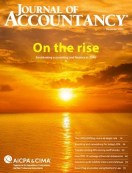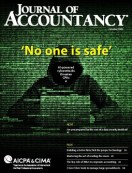A CPA.com and AICPA survey of more than 50 firms unearthed five key themes for audit transformation and a step-by-step approach for a smooth rebuild.
Audit
Governmental Audit Quality Center analyzes 2025 OMB Compliance Supplement
Several GAQC resources are available to assist practitioners involved in single audits and federal grant compliance with putting the delayed OMB supplement to use.
New SEC chair to CPAs: ‘Back to basics’
Paul Atkins, appearing at the AICPA Conference on Current SEC & PCAOB Developments, asked accounting professionals to focus on financial materiality and provided his thoughts on the future of the PCAOB, crypto, and IPOs.
Common audit claims and defenses
In the professional liability world, audit claims are relatively infrequent but exceptionally expensive.
Writing an effective AI prompt for an audit
Explore AI in audit, SQMS documentation strategies, and fraud prevention insights from the November 2025 A&A Focus webcast for accounting professionals.
QM is here: Advice from early adopters
Firms will need to learn from mistakes, fine-tune systems, and adapt to new ways of thinking about quality.
Right-size your quality management documentation for SQMS No. 1
Optimize quality management documentation for SQMS No. 1. Check out these practical tips to keep documentation appropriate and comprehensive, yet right-sized. Remember, the QM deadline is Dec. 15.
PCAOB publishes guidance related to Audit Evidence amendments
The guidance, combined with a recent PCAOB policy statement, applies to requirements becoming effective later this year.
AICPA unveils new QM resources to help firms meet Dec. 15 deadline
The AICPA updated its SQMS No. 1 practice aid, released a new resource on monitoring and remediation, and is hosting live webcasts to help firms implement the new quality management standards by Dec. 15. Key features of the 2025 practice aid on complying with SQMS No. 1 include expanded discussions, tailored guidance for firms of all sizes, and tools for documentation, evaluation, and effective compliance.
8 steps to build your firm’s quality management system on time
Firms that haven’t started establishing their quality management system can get it done by the Dec. 15 deadline by following these steps.
Auditing Standards Board proposes a new fraud standard
The AICPA board issued an exposure draft of a Statement on Auditing Standard (SAS), The Auditor’s Responsibilities Relating to Fraud in an Audit of Financial Statements.
Elimination of PCAOB can’t remain in budget bill, Senate official rules
The Senate parliamentarian’s office determined that a provision aimed at folding the PCAOB into the SEC doesn’t qualify for the budget reconciliation process.
AICPA proposes controls framework for stablecoin issuers
The Assurance Services Executive Committee is seeking public comments on an exposure draft designed to ensure an effective system of controls is in place in connection with recently issued reporting guidelines focused on stablecoins.
State of Play: How firms are helping smooth sustainability reporting
The latest data from research by the International Federation of Accountants, the AICPA, and CIMA reveals that nearly three-fourths of the largest global companies obtained assurance of sustainability disclosures in 2023, with the majority depending on audit firms. U.S. companies rank ahead of the pack when it comes to obtaining assurance but behind the pack when it comes to depending on audit firms.
AICPA monitoring proposed changes to public company auditing oversight
Changes have been proposed by the House Financial Services Committee related to PCAOB inspection and enforcement activities involving firms that audit public companies. In a statement, the AICPA said it believes that healthy oversight of accounting firms performing audits of public companies “protects the public interest.”
Tax legislation, audit oversight, and other AICPA advocacy focus areas
An AICPA executive vice president details points of emphasis related to advocacy in Washington and offers advice to members on managing legislative and regulatory uncertainty. Listen to the episode or read the Q&A with Mark Peterson.
A&A Focus recap: Rev rec, AICPA standard setting update, and stablecoins
The March A&A Focus webcast featured a deep dive into step 4 of the five-step revenue recognition process outlined in FASB ASC Topic 606, as well as news on new auditing standards exposure drafts.
AICPA Auditing Standards Board names Creps as chair
Catherine “Halie” Creps, CPA, a current ASB member and a partner at KPMG, will replace Sara Lord in May, when seven new board members begin their tenures.
PCAOB offers reporting guidance on a number of fronts
The board offers advice to public company auditors about Form AP, upcoming standards on quality control and confirmation, and in the form of free PCAOB-led forums.
Auditing Standards Board releases consultation paper on its forward strategy
The ASB seeks input on the draft of its 2026–2030 strategic plan. The comment deadline is June 13.
Features
SPONSORED REPORT
Preparing clients for new provisions next tax season
As the 2025 filing season approaches, H.R. 1 introduces significant tax reforms that CPAs must be prepared to navigate. These legislative changes represent some of the most comprehensive tax updates in recent years, affecting both individual and corporate taxpayers. This report provides in-depth analysis and guidance on H.R. 1.



















